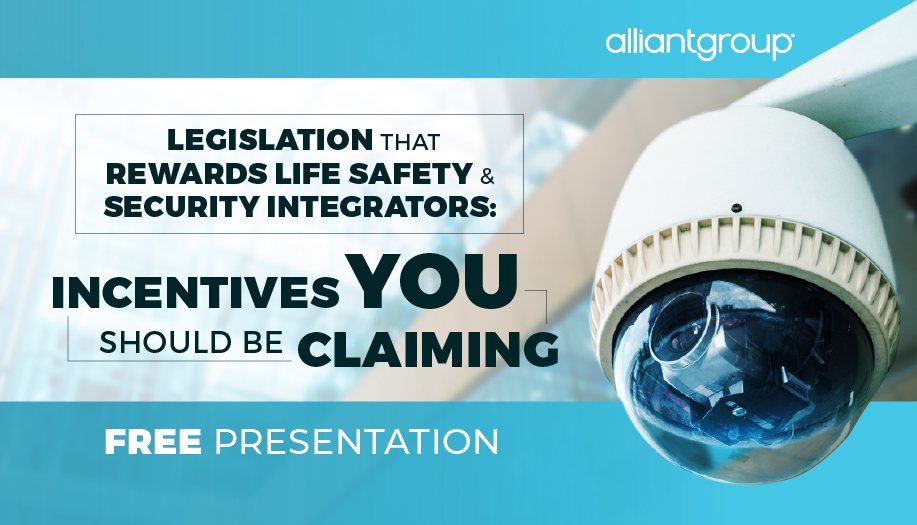August 19, 2013
by Dean Zerbe, former Senior Counsel to the U.S. Senate Finance Committee and alliantgroup National Managing Director
Forbes
I want to update readers — especially architects, engineers and contractors working on federal, state or local government contracts– on a little-known big tax break that is available now and that can put sometimes hundreds of thousands of dollars of cash into the pocket of your business.
What is this wonder tax break? 179D. This is the section of the tax code that provides a benefit for businesses, architects, engineers and contractors when they build or renovate a building (or design a government building in the case of an architect, engineering or contracting firm) that is energy efficient. The maximum deduction is $1.80 per square ft.
FOUR THINGS TO KNOW ABOUT THE LAW
The first thing you need to know is that for an energy efficient building to qualify, or partially qualify, it does not have to have grass growing on the roof or a windmill powering its electrical systems. In brief, you want to surpass 2001 ASHRAE standards — most current state codes already require this. The reality is that in working with hundreds of clients, alliantgroup (my firm) has found that the vast majority of new construction (and many energy efficient redos) will qualify or partially qualify for 179D just by meeting today’s stricter building code requirements.
Second, there are a number of ways that a building or improvement can qualify or partially qualify. The three subsystems that are potentially eligible for this lucrative incentive are the building envelope; HVAC/hot water systems; and interior lighting systems. It is common that a building or improvement can qualify for one subsystem and not qualify for the other two. So you need to look at all the ways the building can potentially qualify or partially qualify.
Third, the definition of a building is very broad. It would include basically all commercial buildings, warehouses, factories, parking garages, and family housing that is four stories or greater. For local, state, and federal government it would include new schools, university buildings, dormitories, airport terminals, jails – – you name it. The one rule of thumb I have learned from my colleague David Ji who lives and breathes all this is that for the economics of 179D to make sense the building (or collection of buildings for example in an office park) should be greater than 50,000 square ft. NOTE: buildings constructed for Indian tribes and tax-exempt entities (think charities) do NOT qualify for the 179D benefit — hopefully that will be revisited by Congress when it looks to extend the law — see below.
Finally, an architect/engineer/contractor can go back three years and get this benefit. Meaning that the architect/engineer/contractor can look at government buildings that she helped design and were placed in service in the last three years — get an allocation letter from the government (see below) and amend their returns and get the 179D benefits.
WHO CAN QUALIFY
OWNER. The first group that can qualify is the owner of the building or improvement – – and this also includes a tenant if the tenant paid for and owns the improvement. The building owner can go back to buildings put in service or improvements made in the last six years – – and they will qualify for 179D. The building owner takes the deduction in the current year and reduces his basis in the building or improvement. For building owners, 179D provides a potentially significant timing benefit in paying taxes.
ARCHITECTS/ENGINEERS/CONTRACTORS. The law provides that a government agency (federal, state or local) can allocate the 179D tax benefits to the architect/engineer/contractor engaged in the design work of the building. The architect or engineering firm is assigned the tax benefit from the government agency — the IRS requires a letter signed by the government with very specific statements. In practice, alliantgroup has found that it is vital that a designer quickly contact the government to get a signed allocation letter — because the government may be able to assign the tax benefit to whoever helped design the building. Therefore, it is crucial that the architect or engineering firm without delay request an official letter from the responsible government employee assigning the tax benefit to their firm (recall – good for buildings in service last three years) – – or where appropriate incorporate the tax benefit in the contract negotiations. Our experience in obtaining these government allocation letters for our clients is broad — sometimes its a simple phone call, sometimes its a significant grind. However, at the end of the day most government entities recognize that by signing these allocation letters they are helping encourage green building and more importantly, bringing much-needed dollars to their local economy.
TRUST BUT VERIFY
179D provides that the architect/engineer/contractor designer must not only get a letter allocating the tax benefit from the government agency — but must also have the energy savings independently certified. The independent certification requires not only modeling but also a site visit by a licensed engineer. We have found in practice conducting these independent studies that it is critical to get the right software to maximize the tax benefits but also the on-site visits by our engineers can yield even greater tax savings — that the plans vs. reality often work in the favor of finding increased tax savings.
OUTLOOK
Section 179D is part of a number of energy tax provisions that are expected to expire at the end of this year — 2013. The American Institute of Architects (who alliantgroup partners) as well as the American Counsel of Engineering Companies are leading the charge to help get this provision renewed. While tax reform is still being debated, it is my sense that after that debate has finished its journey, Congress will turn to the expiring energy provisions and that 179D will most likely be renewed and possibly expanded (the administration supports increasing the benefit to $3.00 per square foot). The reality is that approximately 70% of electricity in this country is consumed by commercial buildings and 179D is a commonsense, technologically neutral way of encouraging energy efficiency. As important, Congress recognizes that the building industry is vital for any economic recovery — and knows that 179D has proven to be an effective means of delivering hundreds of thousands of dollars in tax savings for architects and engineers — if they apply.
![sb-d-zerbe[1]](https://www.alliantgroup.com/wp-content/uploads/2016/09/sb-d-zerbe1.png) Dean Zerbe is alliantgroup’s National Managing Director based in the firm’s Washington, D.C. office. Prior to joining alliantgroup, Zerbe was Senior Counsel and Tax Counsel to the U.S. Senate Committee on Finance. He worked closely with then-Chairman of the Finance Committee, Senator Charles Grassley, on tax legislation. During his tenure on the Finance Committee, Zerbe was intimately involved with nearly every major piece of tax legislation that was signed into law, including the 2001 and 2003 tax reconciliation bills, the JOBS bill in 2004 (corporate tax reform) and the Pension Protection Act. Zerbe is a frequent speaker and author on the outlook for short-term and long-term changes in tax policy, as well as ways accounting firms can help their clients lower their tax bill.
Dean Zerbe is alliantgroup’s National Managing Director based in the firm’s Washington, D.C. office. Prior to joining alliantgroup, Zerbe was Senior Counsel and Tax Counsel to the U.S. Senate Committee on Finance. He worked closely with then-Chairman of the Finance Committee, Senator Charles Grassley, on tax legislation. During his tenure on the Finance Committee, Zerbe was intimately involved with nearly every major piece of tax legislation that was signed into law, including the 2001 and 2003 tax reconciliation bills, the JOBS bill in 2004 (corporate tax reform) and the Pension Protection Act. Zerbe is a frequent speaker and author on the outlook for short-term and long-term changes in tax policy, as well as ways accounting firms can help their clients lower their tax bill.
Would you like additional information or do you have questions?


